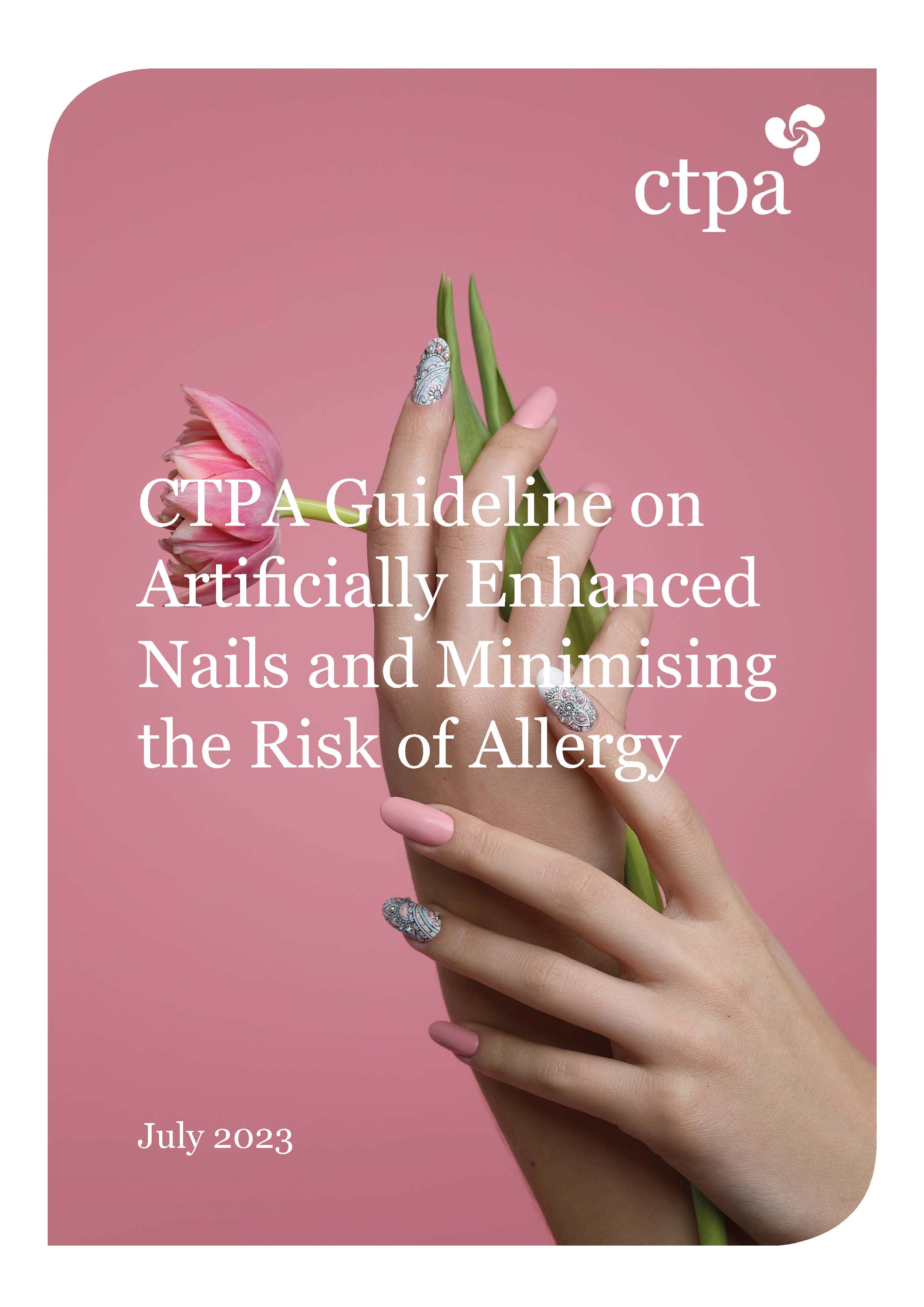in this page:
- What are artificial nails?
- How are acrylic and gel nails applied?
- Allergic reactions
- CTPA Best Practice Guidance
There are many different types of artificial nails, but only some are classed as cosmetic products.
What are artificial nails?
"Liquid and Powder (L&P)" nails and "UV gel" nails are where the artificial nail is 'built up' on the natural nail. Both are classified as cosmetic products. These products may be used in professional salons and nail bars and some will be available for home use. All cosmetic products used or sold in salons are subject to the same strict European safety laws as those sold in retail outlets.
Traditional "false nails" that are already formed in a nail shape and are attached to the natural nail by glue are not classed as cosmetic products, neither is the glue. This is because there is a clear definition of a cosmetic product in law and a cosmetic must be a 'substance' that performs a cosmetic function and cannot be an 'article'. Instead, these are classed as "general products" and will be subject to the General Product Safety Regulation (GPSR). The GPSR requires that products must be safe.
How are acrylic and gel nails applied?
Acrylic (L&P) Nails
Acrylic (L&P) nails are prepared by mixing a liquid acrylic monomer with a solid acrylic powder to form an uncured gel-like semi-solid slurry which is then sculptured by brush onto the natural nail, or over a plastic tip or form. The liquid acrylic monomer is usually a mixture of methacrylate monomers (most commonly ethyl methacrylate (EMA)) and an ingredient to start the hardening process called a catalyst or synergist, usually of the amine class (dimethyl para toluidine or similar). The solid acrylic powder is usually made from methacrylate polymers (most commonly polyacrylates such as polymethylmethacrylate or polyethylmethacrylate), pigments and an ingredient to start the hardening (polymerisation) process called an initiator (usually benzoyl peroxide (BPO)). The uncured gel-like semi-solid is sculpted into the nail shape and then it hardens to its cured, or solid, polymer form over approximately the next five minutes. It can take several hours for the system to fully cure.
UV Gel Nails
UV Gel nails require curing or hardening by ultraviolet (UV) energy from a UV or UV LED lamp. The gel, usually a mixture of short urethane polymers and methacrylate monomers (such as 2-hydroxyethyl methacrylate (HEMA) or hydroxypropyl methacrylate) and a photoinitiator to begin the polymerisation process, is sculptured on the natural nail to form the final shape and then cured under a lamp which emits UV energy.
Allergic reactions
Many artificially enhanced nails contain ingredients that all come from a chemical family called 'acrylates'.
Dermatologists are seeing increasing numbers of patients in their clinics with dermatitis or inflammation of the skin linked to exposure to acrylates when using Liquid and Powder (L&P) and UV gel nail systems. The reactions are not always limited to the finger area around the nail itself but can arise wherever the nail contacts the skin, such as on the face for example. Dust generated from filing or removal of incompletely cured nail coating can also be associated with allergic reactions.
The cured or polymerised nail is unlikely to cause a problem but the liquid acrylate monomers in the starting material may, over time, if exposure to the skin is high enough, lead to allergy. The risk may be minimised by ensuring the liquid monomer or gel is not allowed to contact the skin itself, that the gel is cured fully by using the curing lamp correctly and that any uncured gel is removed completely and in such a way that the tissue or pad used does not contact the skin of either the customer or the nail professional. UV gel that is improperly cured can release the monomers when filed or removed.
The nail system should only be used with the corresponding LED or UV lamp which is specified by the manufacturer. If the incorrect lamp and nail system are used together, the nail system may not be fully cured, which can lead to more uncured methacrylate monomers remaining on the nail surface and a possible increased risk of allergy.
In the case of L&P acrylic nails, the liquid and powder system also needs to be matched and formulated to work together. It is the liquid that has the potential to cause allergy and contact with the skin needs to be avoided during the application. An unmatched system or one that is used improperly, as with UV gel, could allow the uncured product to be released onto the skin during filing or removal.
This is especially important for home use, to make sure the product is used and applied as intended and only on the nail bed.
Acrylates have a wide range of applications, including in certain medical and dental procedures. If an individual develops an allergy to methacrylate chemicals, through exposure to the chemicals in any of these applications, this can have implications for any future dental and medical procedures. Importantly, such allergies may be, and frequently are, lifelong.
If you have any concerns about your nails and how to care for them, do speak with your nail salon professional who will be able to advise you on how often you should have your artificial nails applied and how to keep your nails in best condition.
CTPA Best Practice Guidance
 CTPA has created a "Guideline on Artificially Enhanced Nails and Minimising the Risk of Allergy", which has been developed for salon professionals, consumers, manufacturers and others with involvement in artificially enhanced nails. The Guideline explains that dermatologists are seeing an increase in the rates of allergic reaction to acrylate monomers in Liquid and Powder (L&P) and UV cured gel nail systems, and contains advice on how to minimise the risk of developing such an allergy.
CTPA has created a "Guideline on Artificially Enhanced Nails and Minimising the Risk of Allergy", which has been developed for salon professionals, consumers, manufacturers and others with involvement in artificially enhanced nails. The Guideline explains that dermatologists are seeing an increase in the rates of allergic reaction to acrylate monomers in Liquid and Powder (L&P) and UV cured gel nail systems, and contains advice on how to minimise the risk of developing such an allergy.
The Guideline contains advice for safe use of these products for both salon professionals and end users, highlighting the following key points:
-
Avoid skin contact
-
Apply to healthy nails only
-
Wear appropriate gloves
-
Do not reuse gloves
-
Remove gloves in a manner which avoids skin contact with the contaminated part of the gloves
-
Use the correctly-matched lamp and gel system
-
Use reputable products which comply with cosmetics legislation


